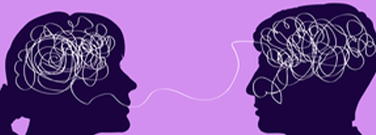Language May Help Shape Our Brains

By Kylie Wolfe
From the structure of words and sentences to how they sound, language exercises different parts of the brain. And because languages can be so distinct, the ones you learn and use may determine more than just who you communicate with or how you do so.
Researchers at the Max Planck Institute for Human Cognitive and Brain Sciences in Leipzig, Germany, found that native language may shape the brain and even the way we think. Their results were published in NeuroImage in April 2023.
Exploring the Brain
The human brain consists of the cerebrum, cerebellum, and brainstem. The cerebrum, the largest of the three, is made up of symmetrical hemispheres. Within these hemispheres, our brain cells, or neurons, send and receive messages by forming connections with each other. They use these connections to interpret signals from our senses and to speak, learn, and move.
Among the cerebrum’s list of skills is the ability to process language. Throughout life, we learn to communicate using at least one language—sometimes more. As that learning occurs, connections within and between the left and right hemispheres of the cerebrum are established and strengthened.
To further explore this brain-language relationship, neuroscientist Alfred Anwander and his team at the Max Planck Institute studied a group of 94 monolingual, or single-language speaking, adults. The volunteers spoke either German or Arabic, very dissimilar languages. Using magnetic resonance imaging (MRI) technology to scan each participant’s brain, researchers noticed clear structural differences between the two groups.
“The specific difficulties [of each language] leave distinct traces in the brain,” Anwander told Science News. “So we are not the same if we learn to speak one language, or if we learn another.”
Interpreting the Results
Researchers found that Arabic speakers have stronger connections across hemispheres, while German speakers have stronger networks within the left hemisphere.
The Arabic language can be complex—especially because it’s written from right to left, which is not typical—and there are unique words and sounds that may require extra effort to decipher. German, on the other hand, is written left to right and offers more flexibility because words can be rearranged and still convey a similar meaning. These distinctions reinforce neurons and their pathways over time, offering a possible explanation for the structural differences between the two groups.
It's also important to note that the Arabic speakers had recently moved to Germany, and although they did not speak German, their exposure to a new language may have led to more interaction between their left and right hemispheres.
As scientists study the brain and the way language affects it, they’ll hopefully learn even more about the intricacies of this connection. The pathways used for language can also be used for other tasks—an interesting neurological wrinkle to explore in future studies.